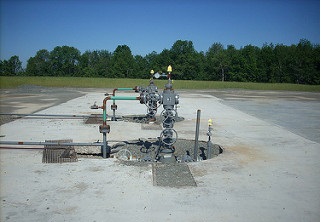Ellen Edwards: Where Does Bronxville’s Fuel Come From?

By Ellen Edwards
Jun. 6, 2018: Like people everywhere, residents of Bronxville are living through a time of major transition when it comes to energy.
Climate change and other environmental concerns are forcing us to reconsider fossil fuels and move toward cleaner sources of energy. Our decentralization of the power grid is an attempt to make the system more resilient—less vulnerable to storms, accidents, and cyber-attacks—even as storms become more powerful and unpredictable. And digitization is allowing us to use energy far more efficiently.
New York State is among the highest energy consumers in the country overall, but according to the U.S. Energy Information Administration, in 2015 our per capita use was the lowest. That's partly because 25% of our residents use mass transit—that's five times the national average.
Our state government has initiated an ambitious energy plan. By 2030, we want to reduce greenhouse gasses by 40% from 1990 levels and get half of our energy from renewable sources. Currently, more than 50% of our energy needs to come from out of state and Canada, and less than 25% comes from renewable sources.
Natural gas burned at 64 power-generating plants throughout the state produces almost half of the state's electricity. Nuclear energy produced at four facilities supplies another 25%. New York is in the process of shutting down or converting to natural gas its few remaining coal-fired generating plants.
Petroleum is used for transportation and to heat homes. There are no petroleum refineries in New York; we access refineries in New Jersey and Pennsylvania. New York City harbor, with its terminals in both New York and New Jersey, is the largest petroleum hub in the Northeast, with an ability to store up to 75 million barrels of oil. Petroleum for heating fuel and gasoline is distributed by truck to New England and by barge up the Hudson River to upstate municipalities. We also access the Colonial Pipeline system, which brings petroleum from the Gulf Coast to New York Harbor and was briefly shut down after Hurricane Harvey, and we import some petroleum from Canada.
The proposed Pilgrim Pipeline, which would bring volatile crude oil produced by fracking from Albany to refineries in Linden, NJ, and refined petroleum products from Linden to Albany, is being protested by dozens of communities and organizations west of the Hudson River. Those supporting pipelines claim they are needed to ensure a steady fuel supply, which currently depends on transportation by barges that are vulnerable to bad weather, and those opposed cite environmental concerns and the need to invest in clean-energy infrastructure.
Three-fourths of the petroleum we import is used for transportation. The remaining quarter is used for heating homes and commercial property. Locally, fuel oil is supplied by a number of private companies. One-fourth of New York state homes are heated by fuel oil; one half are heated by natural gas supplied via pipeline from out of state and Canada.
Increasingly, our natural gas comes from Pennsylvania, where it is produced by hydraulic fracturing (commonly called "fracking") of the huge geological formation known as Marcellus Shale, much of which also underlies our state. Note that although fracking is now illegal in New York State, after a hard-fought battle, we rely on natural gas created by fracking processes that take place elsewhere. In 2012, the state became the first Northeastern state to require that all heating oil be ultra-low sulfur diesel, a cleaner-burning fuel. Such leadership has encouraged other Northeastern states to follow suit.
New York State generates more hydroelectric power than any other state east of the Rocky Mountains. Four-fifths of our renewable energy now comes from hydropower, especially from the Robert Moses Niagara Hydroelectric Power Plant, the fourth largest in the U.S. and one originally designed by Thomas Edison's rival Nikola Tesla.
The New York Power Authority is the largest state-owned power organization in the country. First created by Governor Franklin Roosevelt in 1931, the NYPA promotes economic growth and energy efficiency through the power facilities it owns and operates, through projects throughout the state promoting green energy, and through its goal of becoming the first fully digitized utility in the country. The NYPA receives no tax revenue or state credit and finances its projects through bond sales.
As New York State works hard to reach its ambitious energy goals, every choice you and I make matters. Did you know that according to the U.S. Energy Information Administration, for every gallon of gas your (and my) car burns (in which a gallon is 90% gasoline and 10% ethanol), 18.9 pounds of carbon dioxide are released into the air? Air travel is far worse. Although some airlines are making strides toward lowering their carbon footprint, the average flight between New York and Europe produces a "warming effect" of two to three tons of heat-trapping gases per person. In fact, the average American generates 19 tons of carbon dioxide a year, compared to 10 tons for the average European.
These sobering statistics are worth thinking about the next time you hop in the car. If we believe that our children have a right to a healthy, safe environment, what steps are we willing to take to ensure it? As for me, I can't wait to ditch my ICE (internal combustion engine) car and buy my first EV (electric vehicle). Tom Roach, the mayor of White Plains, raved about his Nissan Leaf during a recent seminar at the Westchester County Center. But we need reliable charging stations. Is that something you can support?
Editor's note: Ellen Edwards is a Bronxville resident and a member of the Bronxville Green Committee, which welcomes volunteers.
Pictured here: Gas wells in Sullivan County, Pennsylvania. The photographer says, "North Central Pennsylvania has undergone some major changes since I moved to North Carolina in 2000. Natural gas is being drilled from the Marcellus Formation. These wells are fully functional."
Photo by Gerry Dincher licensed under Creative Commons Attribution-ShareAlike 2.0 Generic (CC BY-SA 2.0). The image was cropped slightly at the bottom for space restrictions.
Editor's note: As a public service, MyhometownBronxville publishes press releases, statements, and articles from local institutions, officeholders, candidates, and individuals. MyhometownBronxville does not fact-check statements therein, and any opinions expressed therein do not necessarily reflect the thinking of its staff.
Government & History Directory
Bronxville is a quaint village (one square mile) located just 16 miles north of midtown Manhattan (roughly 30 minutes on the train) and has a population of approximately 6,500. It is known as a premier community with an excellent public school (K-12) and easy access to Manhattan. Bronxville offers many amenities including an attractive business district, a hospital (Lawrence Hospital), public paddle and tennis courts, fine dining at local restaurants, two private country clubs and a community library.
While the earliest settlers of Bronxville date back to the first half of the 18th century, the history of the modern suburb of Bronxville began in 1890 when William Van Duzer Lawrence purchased a farm and commissioned the architect, William A. Bates, to design a planned community of houses for well-known artists and professionals that became a thriving art colony. This community, now called Lawrence Park, is listed on the National register of Historic Places and many of the homes still have artists’ studios. A neighborhood association within Lawrence Park called “The Hilltop Association” keeps this heritage alive with art shows and other events for neighbors.
Bronxville offers many charming neighborhoods as well as a variety of living options for residents including single family homes, town houses, cooperatives and condominiums. One of the chief benefits of living in “the village” is that your children can attend the Bronxville School.
The Bronxville postal zone (10708, known as “Bronxville PO”) includes the village of Bronxville as well as the Chester Heights section of Eastchester, parts of Tuckahoe and the Lawrence Park West, Cedar Knolls, Armour Villa and Longvale sections of Yonkers. Many of these areas have their own distinct character. For instance, the Armour Villa section has many historic homes and even has its own newsletter called “The Villa Voice” which reports on neighborhood news.
Link to Village of Bronxville One Square Mile Monthly Newsletter
Village of Bronxville Administrative Offices
337-6500
Open 9:00am - 4pm excluding holidays and weekends
Bronxville Police Department
337-0500
Open 24 hours
Bronxville Parking Violations
337-2024
Open 9:00am - 4pm excluding holidays and weekends
Bronxville Fire Deparment
793-6400












